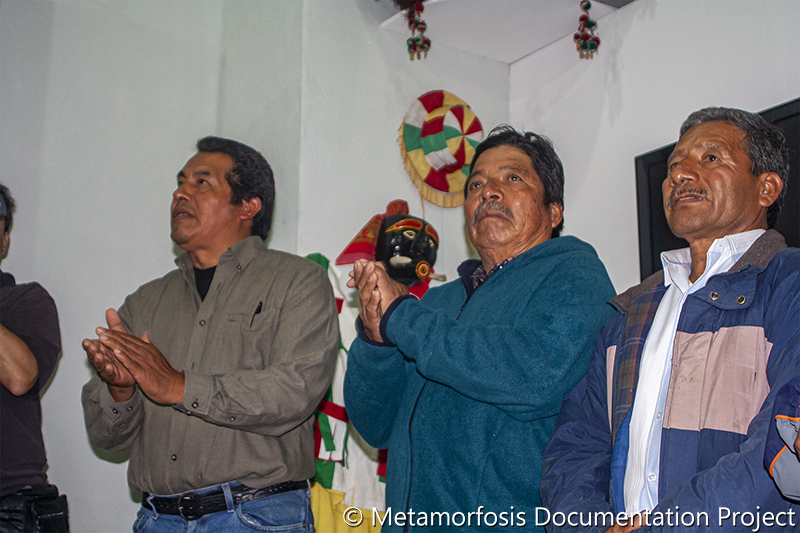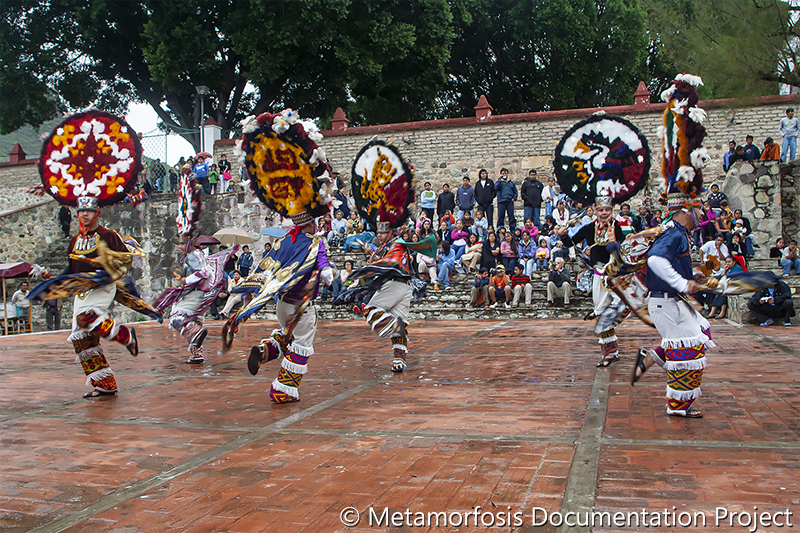Inauguration of the permanent exhibit and world premier of the docuementary "LA Danza de la Pluma. Fe, Sacrificio y Tradicion" in Teotitlán del Valle.
Teotitlán del Valle (whose translation from the Nahuatl is "Place of the Gods in the Valley") is referred to as the Spiritual Heart of the Sacred Valley of Tlacolula. Teotitlán del Valle is considered the guardian of the Zapotec culture of the valley, and its presentation of the Danza de la Pluma is renowned. Teotitlán del Valle is acclaimed worldwide for the Zapotec weavings it produces.
Teotitlán del Valle is a town still ruled by the system of Uses and Customs; a system with roots in pre-hispanic times with established protocols and proven methods for communal living. This system of communal service is practiced by the concept of Tequio, the use of personal time, effort and resources for communal benefit. The town is ruled by a cabildo or presidencia, a ruling committee which is chosen by open vote by the entire community.
All other committees that head the different community institutions are chosen in the same way, with appointees serving from two to three years in each post. In the course of time everyone in the community serves in one or several different posts. La mayordomía is another concept that plays an important role in communal service in this community. It is when a person or family is appointed to take care of a church, the patron saint, a religious celebration or a sacred place. Community service is a citizen's responsibility and a source of pride and respect. Teotitlán del Valle is an archeological site that never became a ruin.
The town organically grew over the pre-hispanic settlement, and is thought by many to be first settlement of Zapotec culture.
Community service is a citizen's responsibility and a source of pride and respect. Teotitlán del Valle is an archeological site that never became a ruin. The town organically grew over the pre-hispanic settlement, and is thought by many to be first settlement of Zapotec culture.
Two decades ago the town felt the need to protect the artifacts that routinely appeared during the building or remodeling of peoples' homes, and a community museum was contemplated to store and display the rich and unique legacy and history of the town. In many cases the artifacts are important archeological relics worthy of world class museums, with many of them now included in important archeological books for their artistic and historic relevance.
Teotitlán del Valle is a town of weavers. Weaving has always been the specialty of the town, and the history of this tradition would also be displayed in the museum. Museologists were brought in, experts were consulted, and the Museum took shape, complete with informative and thoughtful exhibits. Missing from the Museum was an exhibit featuring one of the most important and relevant traditions of the community, La Danza de la Pluma.
On a visit to Oaxaca in 2006 we made friends in Teotitlán del Valle. We visited the Museum and realized that Teotitlán del Valle could be a great place to develop our next project.
We could document the Dance, help the Museum by collaborating in a community project to create a Dance Exhibit, and additionally we could assist in the further development of the Museum by donating the rights to reproduce the resulting documentary to exclusively benefit the Museum.
In December of 2007 we began the Project with the documentation of La Danza de la Pluma.
On June 8th of 2008 we sponsored a community event. It began at the Community Museum, where the "Sala de la Danza de la Pluma" Exhibit was officially inaugurated with the ribbon cutting by the Municipal President, assisted by the Municipal Council, the Museum Committee, the Dance Committee and the dance group, the Grupo de Promesa 2007 - 2009. At the Civic Plaza, after the inauguration of the Dance Exhibit, we officially presented to the Museum Committee the materials we were donating, and then the Grupo de Promesa 2007 - 2009 presented a few dances of La Danza de la Pluma.
We screened a selection of old community photos from the archives of the Community Museum, and the evening culminated with the premiere presentation of our documentary, "La Danza de la Pluma. Faith, Sacrifice and Tradition", to a full house in the Municipal Hall adjoining the Civic Plaza.

The three main newspapers of Oaxaca City published articles about the Project.
You can read the articles through the links above.
The nightly news program of Channel 9 TV in Oaxaca City covered the community event.
















